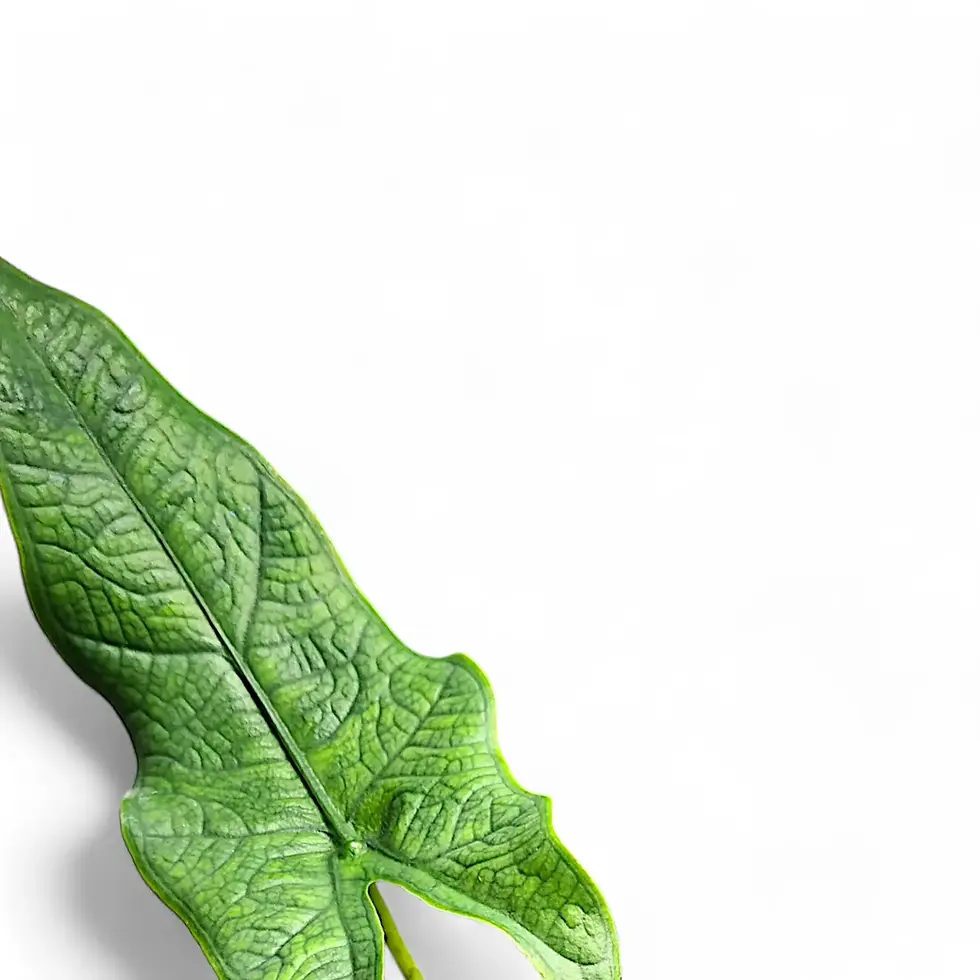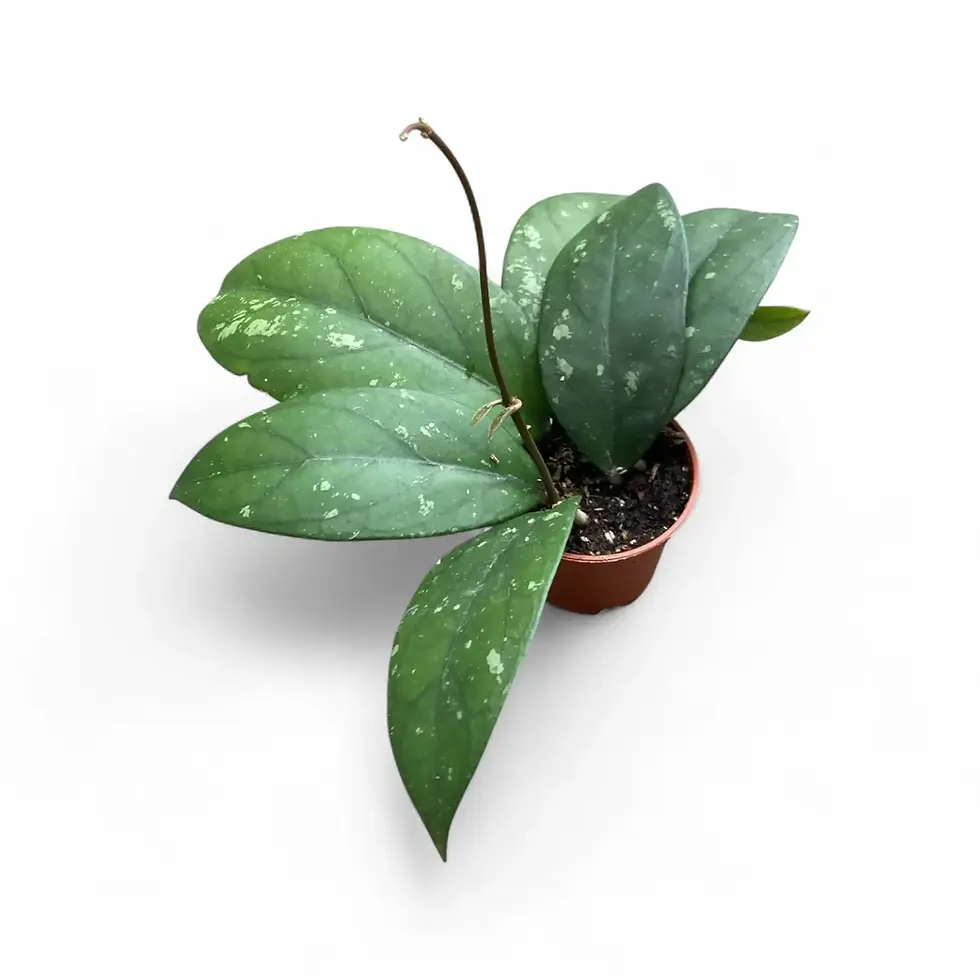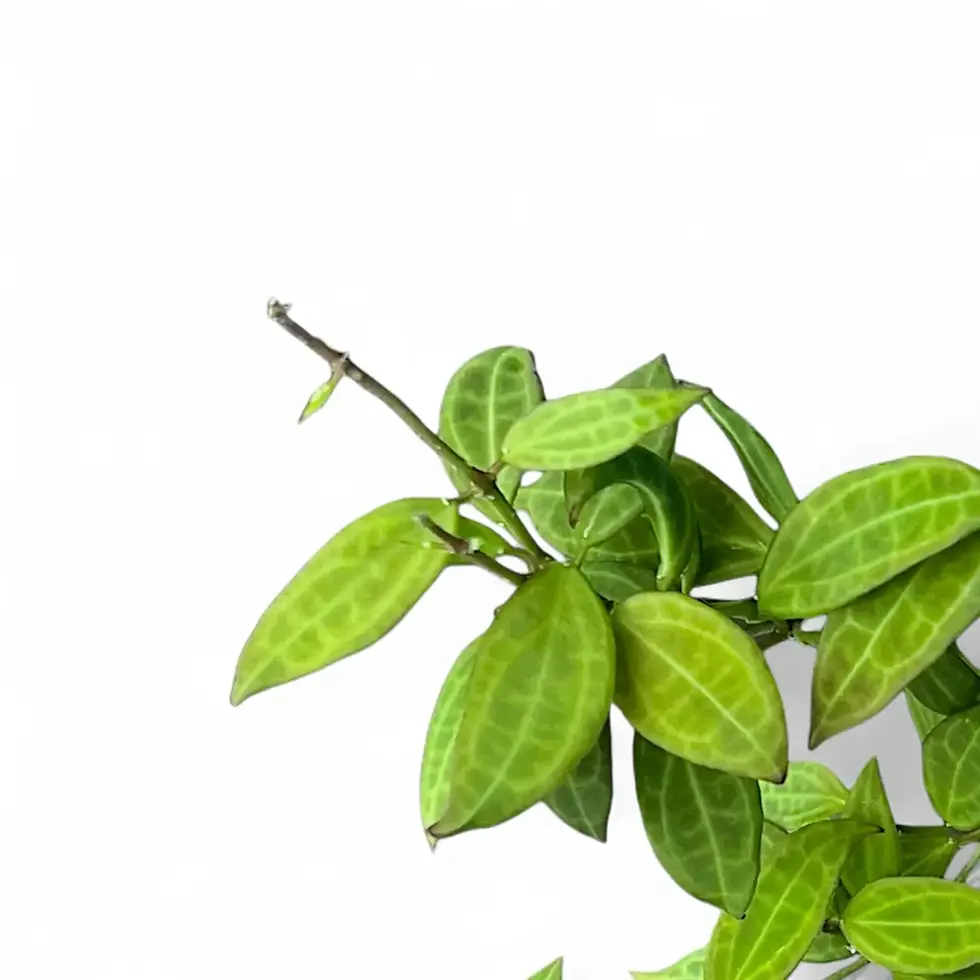Alocasia sp. Sulawesi 'Green Carpet' – Rare Tropical Aroid with Sculptural Foliage
Alocasia sp. Sulawesi 'Green Carpet' is an exceptionally rare Alocasia type collected from the tropical rainforests of Sulawesi, Indonesia. Though still botanically undescribed, this plant has quickly captured the interest of collectors with its narrow, deeply textured leaves and unusually bold venation. Its upright form and deep green tones make it a refined, space-efficient option for serious aroid enthusiasts.
Unique Characteristics of Alocasia sp. Sulawesi 'Green Carpet'
- Narrow, lance-shaped foliage with a rich, dark green surface and sculptural veins.
- Compact vertical habit ideal for tabletops, shelves, or grouped displays.
- Pronounced midrib and secondary venation create a striking 3D leaf texture.
- Similar in habit to Alocasia longiloba, but with finer leaf proportions and stronger ribbing.
Natural Habitat and Background
This variety is believed to occur in lowland rainforest margins and humid foothills of Sulawesi, thriving under partial shade beneath dense canopy cover. With consistent temperatures between 22–30 °C and high humidity, its native range reflects the conditions needed to succeed indoors.
- Origin: Sulawesi, Indonesia (precise locality undocumented).
- Growth Habit: Upright, moderate height (up to 80 cm indoors).
- Toxicity: Not pet-safe – contains calcium oxalate crystals.
Care Tips for Alocasia sp. Sulawesi 'Green Carpet'
- Light: Bright, indirect light is ideal. Avoid direct sun to prevent scorching.
- Water: Allow the top 2–3 cm of soil to dry before rewatering. Never let the substrate stay soggy.
- Humidity: Prefers 60–80 % humidity. Leaf tips may brown in dry indoor air.
- Temperature: Stable warmth between 20–28 °C, no sudden cold drafts.
- Soil: Airy mix of coconut fiber, perlite, bark, and compost. Excellent drainage is essential.
- Fertilizer: Use a balanced liquid feed once per month when actively growing.
- Repotting: Every 12–18 months to refresh substrate and accommodate root expansion.
- Propagation: Best done by dividing offsets during repotting.
- Hydro Suitability: Adapts well to semi-hydro systems using mineral or inert substrates.
- Leaf Support: Consider light staking for taller leaves as the plant matures.
Typical Problems and How to Fix Them
- Yellow Leaves: Usually caused by excess water or soggy substrate. Adjust watering frequency.
- Brown Margins: Often a result of dry air or salt buildup. Increase humidity and flush the soil.
- Pests: Susceptible to thrips and spider mites. Wipe leaves regularly and use neem oil if needed.
Extra Notes for Collectors
As an undescribed species, some variation between individuals is normal and to be expected. Leaf shape, venation depth, or coloration may differ slightly depending on age, care, and genetics. This makes each specimen of Alocasia sp. Sulawesi 'Green Carpet' a one-of-a-kind addition to a rare plant collection.
Botanical Etymology
Alocasia is derived from “a-” (not) and “Colocasia,” highlighting its taxonomic distinction from a closely related genus. While this Sulawesi form has yet to receive a formal Latin name, its morphology places it within the longiloba-type Alocasias known for their arrow-shaped foliage and upright petioles.
Frequently Asked Questions – Alocasia sp. Sulawesi 'Green Carpet'
- Can I grow this in a low-light room? It needs bright, filtered light. Low light slows growth and weakens leaf structure.
- What’s the ideal potting mix? A chunky, breathable mix using coco chips, perlite, and organic compost provides structure and drainage.
- Is this plant safe for pets? No – like most aroids, it's toxic if ingested and should be kept out of reach of animals and small children.
Bring Alocasia sp. Sulawesi 'Green Carpet' Into Your Collection
If you're seeking a visually striking, compact Alocasia with rich texture and collector rarity, Alocasia sp. Sulawesi 'Green Carpet' is an outstanding choice. Order now and elevate your indoor jungle with this tropical gem.
Alocasia sp. Sulawesi 'Green Carpet'
Alocasia sp. Sulawesi 'Green Carpet' comes in a ⌀ 14 cm pot and is approximately 25 cm tall
































